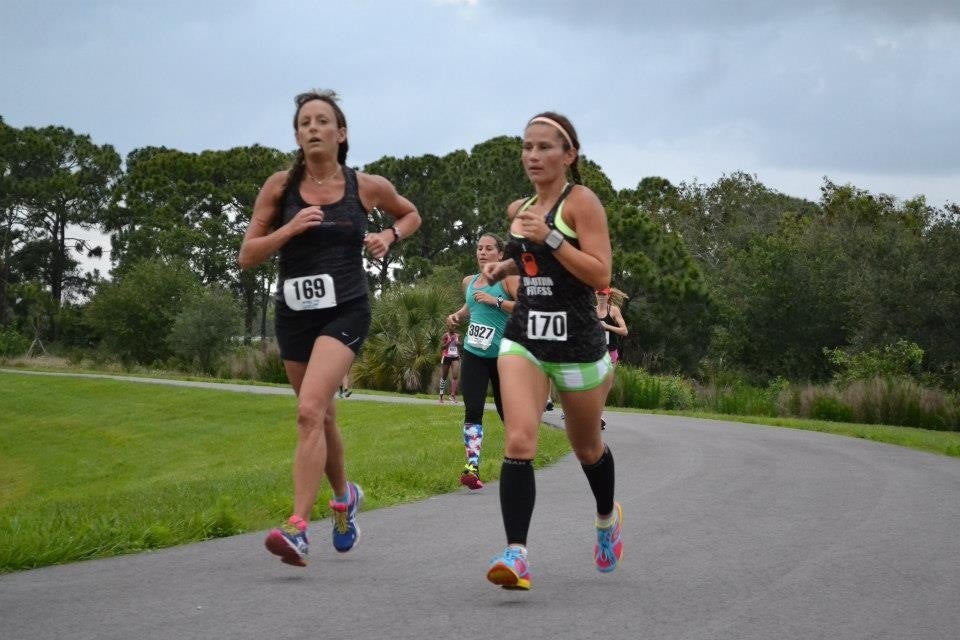If You Took A Hiatus This Winter, Here's How To Spring Back In

Here’s your spring awakening: less hibernation and more exercise! But the start of spring doesn’t mean you can suddenly sprint and lift like Jillian Michaels. If you had a strength-training stalemate all winter, the body is likely to lose some of its tone, condition and/or flexibility, so without easing your way back into active routines, injuries can easily pop up.
Dr. David Neuman, founder of Pop-Doc.com, Physical Therapist Karena Wu and owner of ActiveCare Physical Therapy, and chiropractor Dr. Rob Silverman are sharing their tips on how to prevent fitness injuries from winter to spring.
Slow and steady wins the race.
Even though spring is pumping you up, don’t exercise as long, fast or often as you used to before winter. “Reintroduce your body to movements, weights, frequency and duration,” says physical therapist Karena Wu. “You can feel more tired initially because you are expending more calories doing additional activity, so your body needs to get used to all of this work.”
So for your fresh spring training, Wu says stay hydrated, use smaller weights, slower and steady pace, shorter duration, proper technique and lots of healthy eating.
Good stretching is a good start.
Like flowers in the spring, muscles need to be warmed up. At least 5-10 minutes of gentle and controlled stretching before working out is key. According to Dr. Silverman, “Stretch safely in a heated environment, where your blood flow will increase, making you feel more flexible. However, be careful to not surpass your safe zone, which is anything over 20 to 25 percent of your resting length. By surpassing your safe zone, you begin to damage a muscle. To avoid this injury, stretch at your own pace.” Wu also recommends dynamic stretching to prepare your body for a new wave of working out.
Beware the bulk.
Dr. Neuman warns about “bulking up.” He says: “It can cause your muscles to have the ability to create joint reactive forces that are too much for the joint to handle. This can lead to damage to the joints and an inflammatory reactions. And once this sets in, there may have to be another period of inactivity, so all your ‘work’ will not have paid off.”
Check your sneakers, or wreck yourself.
With spring weather in action, so is running outside more, but don’t run like Forrest Gump without proper gear. Wu explains that “running has a period of ‘double float,’ which means for a split second, nothing is in contact with the ground.” That means every stride you take, one leg is absorbing all of your weight plus gravity, and the ground reaction forces means significant impact forces through your joints. Without supportive and proper cushioned shoes, your joints will be negatively affected.
Get into interval running.
Interval running is a great gradual return to running because it allows the body to acclimate to the impact forces of running. It also increases muscle energy, cardiovascular output and oxygen consumption without fatiguing the system too greatly. Wu suggests to “start slowly in your jog to get used to how it feels to run and how the body has to brace for impact during the stance phase of running.” And now that spring is around the corner, you’ll have all of outside to interval jog around.
Stretch after the sweat.
The best time to stretch is really after exercise. “Blood is flowing to the skeletal muscles, your tissues are more pliable and the stretch is not as uncomfortable (the dreaded stretch pain),” Dr. Neuman explains. Take the time to do some static stretches to help increase flexibility for the long run and slow the heart rate down. It means less tightness and soreness after exercise because it can help move the lactic acid out of the muscle tissues.
Pamper yourself and rest away.
Remember that a massage can be used proactively. According to Wu, “Nothing beats fingers digging deep into your tissues to help loosen them up after you work out and continue to do your stretches. Massage can help break up fascial adhesions (the ‘knots’ found in muscles) and increase circulation to the tissues. It also helps to move lactic acid out of tight tissues.” After your massage, take a good and long rest. Then, every morning will feel like a spring awakening.
